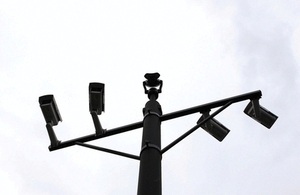The University of Oxford has been awarded the Surveillance Camera Commissioner’s certification mark after being audited against the 12 guiding principles of the Surveillance Camera Code of Practice. The code aims to balance the need for cameras in public places with an individual’s right to privacy. The certification audit was conducted by the Security Systems and Alarms Inspection Board (SSAIB).
The University of Oxford is a large, internationally-renowned academic institution recognised as the oldest in the English-speaking world. From an initial six cameras in 1990 to almost 200 cameras today, the university has sought to use its CCTV system to prevent and detect crime and support a safe environment for staff, students and visitors.
Lesley Nesbitt, Crime Prevention Design Advisor said: “Oxford University aspires to the highest standards of CCTV surveillance and the Commissioner’s certification provides confidence to the University staff, students and visitors that the deployment of our CCTV system is proportionate, effective, compliant with relevant legal obligations and importantly, deployed to protect and support them.”
University of Oxford is one of the largest employers in Oxfordshire and certification enables it to demonstrate its commitment to transparency and accountability to nearly 24,000 students and more than 13,000 employees. The University employs its own security team to provide 24/7 staffing for the security control room and undertake patrols of the academic and residential campus.
The university encourages visitors to enjoy the architectural splendor of its buildings, parks, gardens and green spaces including its many colleges, museums, and galleries, in a city that is small enough to explore on foot. The University of Oxford Security Services team carries out an annual review of their CCTV cameras to ensure that each camera’s deployment is justified with a pressing need and legitimate reason, identifying cameras that can be removed and areas where new cameras should be deployed.








